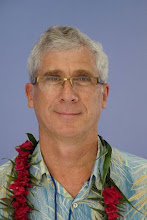“Our Restless Heart” by Thomas Martin, is part of the Traditions of Christian Spirituality series and covers the Augustinian Tradition. Augustine had a towering impact over Western Christianity as no other, and his only real rival was St. Thomas Aquinas. Augustine is a fascinating and talented figure-a gifted theologian, writer, poet, bishop, and monk whose intellectual and spiritual legacy is claimed by Catholic and Protestant alike. Who was Augustine and why is the Augustinian legacy important today? These very questions “Our Restless Heart” tries to answer.
The opening chapter-and perhaps the most important chapter in the book-provides an overview of Augustine’s spiritual vision. There are important historical facts such as Augustine’s early life, relationship with his mother Monica and son Deodatus, and finally his famous conversion. Augustine’s celebrated quote that his heart was restless until he found his rest in God is seen by Martin as a metaphor of “the journey” (peregrinato) and key to understanding Augustinian spirituality (pg. 25). This is a same sense of "journey" that we find in Biblical accounts such as in Abram’s call and in classical literature such as Homer’s Odyssey. The call to grow, the leave the familiar, and to reach beyond to the unknown.
Chapter two examines the Rule of St. Augustine, The Praeceptum, which covered the key aspects of monastic life; the basis cf common life; prayer; moderation and self denial; safeguarding chastity and fraternal correction; the care of the community; asking pardon and forgiving offenses; governance and obedience; and observance of the rule. The key charism of the Augustinian Tradition is love where love of neighbor and unity reflect God’s love for us. This is a great chapter as it shows the uniqueness of the Augustine Rule.
The third and fourth chapter examine how the Augustine order reinvented itself and became part of the Mendicant reforms. Chapter five-is one of the most fascinating in the book-and demonstrates how the Catholic Humanists and Protestant Reformers found inspiration in different parts of Augustine, claiming the Bishop of Hippo as their own. It is a tribute to depth of Augustine that Desiderius Erasmus, Martin Luther, John Calvin, and Jerome Seripando call all claim to different parts of the Augustan cannon. This is best demonstrated when John Calvin wrote “It is Augustine who is the best and most faithful witness of all antiquity whom we most often cite” (pg. 127). That statement could have easily been written by the other three reformers.
This is a great introduction to St. Augustine and to many of his theological and spiritual writings. Writing a book on Augustine is no easy task and to write a fresh and interesting book on Augustine and the entire Augustinian tradition is remarkable achievement. I really enjoyed this book and it left me asking for more.
Let me conclude this review with a quote from Augustine, the Doctor of Grace himself, as it reflects on the kind of person he was:
"What do I want: What do I desire: What do I burn for? Why am I sitting here? Why do I live? there’s only one reason: so that we may live together with Christ. This is my intense desire, this is my honor, this my richness, this my joy, this my glory…I DO NOT WANT TO BE SAVED WITHOUT YOU” (pg. 160).




No comments:
Post a Comment